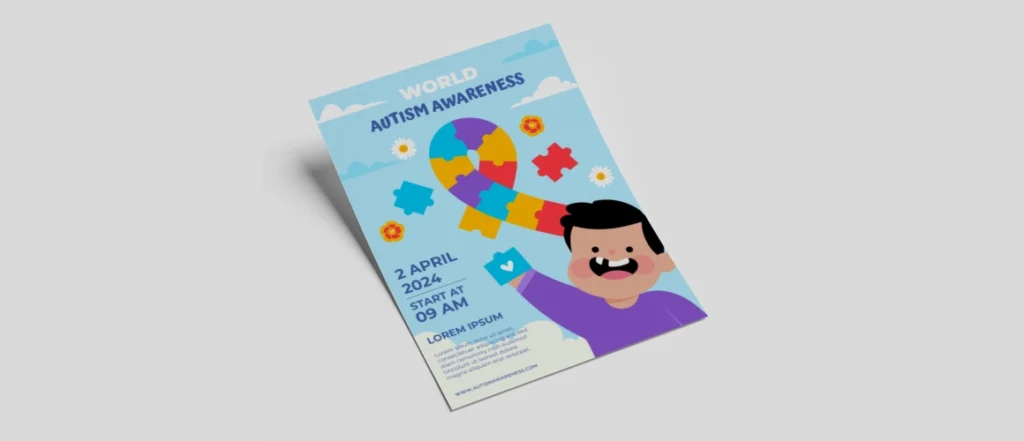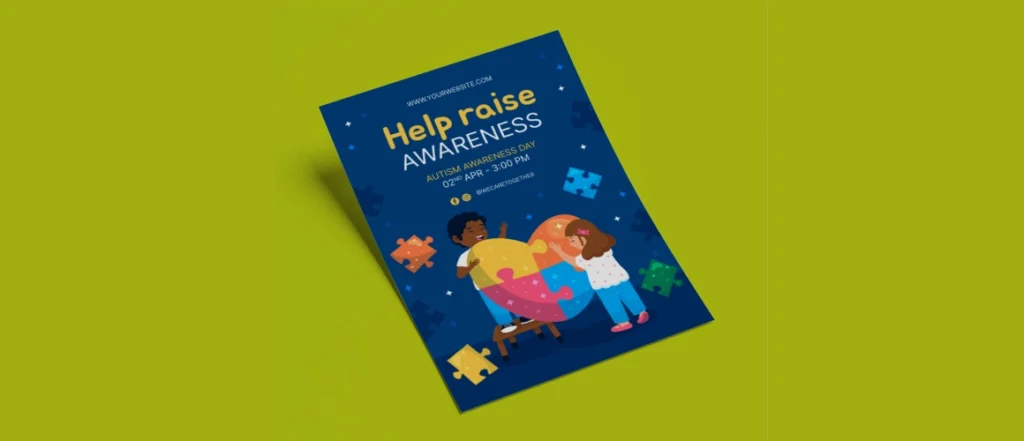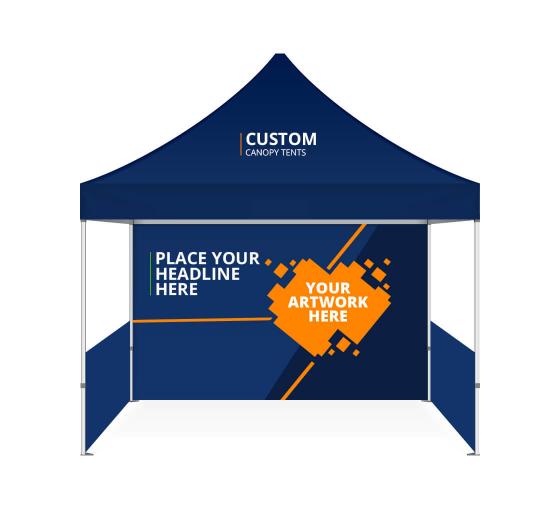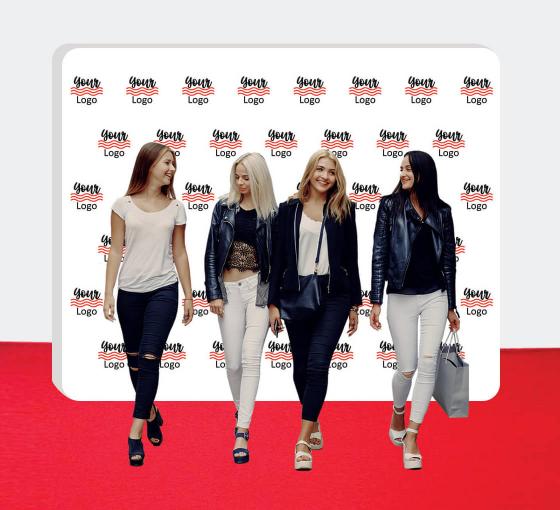‘Every Fold, Every Story’

First things first, We’re All in This Together – Autism Awareness. It’s not just about the flyers; it’s about the places they go and the stories they tell. Designing those autism awareness flyers was just the beginning. Now, let’s discuss how we’re going to get those wings fluttering and make a real impact right here in our beloved Aotearoa.
Understand the New Zealand Landscape Concerning Autism
Before diving into distribution strategies, let’s glance at the New Zealand landscape concerning autism. According to the Ministry of Health’s data, approximately 1 in 66 New Zealanders have been diagnosed with autism spectrum disorder (ASD). This statistic underscores the importance of widespread awareness and support mechanisms.
Neighborhood Gossip
Our communities are like big, extended families. University of Otago says grassroots approaches work a treat. So, let’s chat with our neighbors, join local events, and cozy up with community leaders. We’re not just distributing flyers; we’re having a yarn and spreading understanding right at the doorstep.
Schoolyard Chronicles
Schools are where our future leaders are growing up. The New Zealand Council for Educational Research has the lowdown on the importance of schools in shaping minds. Let’s get those flyers into schools, on noticeboards, and in newsletters. We’re talking about building understanding from the ground up.
Health Hub Connection
Hospitals and clinics – they’re not just for sick days. The New Zealand Medical Journal agrees – these places are vital for health info. Let’s make sure our flyers find a home in waiting rooms and therapy centers. After all, health is not just about the body; it’s about understanding the mind too.
Cultural Respect with a Kiwi Twist
Kiwis are all about respect, right? Massey University’s onto something when it comes to cultural sensitivity. Let’s tailor our flyers to respect Maori values, making sure our message feels right at home with our Kiwi diversity.
- Color and Design
Subdued Palette: Opt for a color palette that is calming and inclusive. Use colors that are culturally appropriate and resonate with both autism awareness and Maori values.
Sensitivity to Symbolism: Be aware of the cultural symbolism associated with colors and symbols. Ensure that they align with both autism awareness and Maori cultural sensitivities.
Festival Feels
Who doesn’t love a good festy? Festivals are inherently joyous occasions. Integrating autism awareness into these events allows you to convey a positive message about celebrating differences. This approach helps shift the narrative around autism from mere awareness to celebration and acceptance. Let’s make sure your autism flyers hit the scene during local events and festivals. Because understanding deserves a bit of celebration, doesn’t it?
Business Buds
Our local businesses – they’re like the heartbeat of our towns. BusinessNZ reminds us how crucial they are. So, let’s team up. Businesses can be prime spots for our flyers, ensuring they get noticed in places where people gather.
- Strategic Placement: Work closely with local businesses to strategically place your autism awareness flyers in high-traffic areas. Consider locations like entrances, waiting areas, or community boards where people often gather.
- Mutually Beneficial Partnerships: Highlight the mutual benefit for both your campaign and the businesses. Your flyers contribute to community engagement, and businesses, in turn, show their commitment to supporting local causes.
- Customized Materials: Tailor your flyers to resonate with the specific audience of each business. For example, if a cafe is participating, include information about autism-friendly practices or events that patrons can attend.
- Feedback Mechanism: Establish a feedback mechanism with businesses to understand how well the flyers are received and if there are any suggestions for improvement.

Influencers and Advocates
Influencers aren’t just online – they’re in our neighborhoods too. University of Waikato points out their impact. Let’s get our local influencers and advocates on board. Their support can make our message hit home with an authentic Kiwi vibe.
- Identifying Local Influencers: Identify individuals within the community who have a significant impact and a substantial local following. These could be community leaders, respected figures, or individuals known for their involvement in local causes.
- Authentic Partnerships: Approach influencers and advocates for authentic partnerships. Share the importance of autism awareness and how their support can make a meaningful impact. Provide them with customized materials, such as unique versions of the flyer that align with their personal brand.
- Social Media Collaboration: Leverage both online and offline influence. Encourage influencers to share the campaign on their social media platforms and in their local networks. This creates a ripple effect, extending the reach of your message.
- Event Involvement: If influencers are involved in local events or gatherings, ensure that your campaign materials are present at these events. This can include having a booth, distributing flyers, or featuring the campaign in event announcements.
Data, Not Drama
Now, let’s talk numbers, but keep it easy. Statistics New Zealand knows what’s up. Unique identifiers, QR codes, or landing pages – let’s use them to measure how our flyers are doing. It’s like a bit of Kiwi ingenuity meets tracking magic.
- Unique Identifiers: Incorporate unique identifiers on your flyers, such as QR codes or short URLs. This allows you to track the engagement and effectiveness of your campaign. For instance, you can use different QR codes for various locations or partners.
- QR Codes for Online Engagement: Link QR codes to online platforms like a dedicated campaign website or social media pages. This not only provides additional information but also allows for ongoing engagement beyond the initial flyer distribution.
- Landing Pages for Specific Campaigns: Create landing pages specifically for different aspects of your campaign. For example, one landing page could focus on event details, while another provides resources for understanding autism. Use analytics tools to monitor traffic and user engagement on these pages.
- Surveys and Feedback Forms: Include QR codes or links to surveys on your flyers. Encourage people to provide feedback or share their experiences. This data can be invaluable for assessing the impact of your campaign and making informed adjustments.
- Collaboration with Data Experts: If possible, collaborate with data experts or analysts to ensure accurate interpretation of the collected data. This collaboration can help in extracting meaningful insights to further refine your campaign strategies.
So, there you have it – our Kiwi journey of spreading understanding, one chat and one flyer at a time. Here’s to making our communities more inclusive, because, hey, that’s what Kiwis do best.
Written by BannerBuzz Editorial Team


 Posted in
Posted in 



